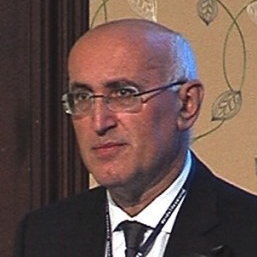Trace Element Exposure and Human Health
A special issue of International Journal of Environmental Research and Public Health (ISSN 1660-4601). This special issue belongs to the section "Environmental Science and Engineering".
Deadline for manuscript submissions: closed (31 March 2020) | Viewed by 25548
Special Issue Editor
2. Department of Epidemiology, Boston University School of Public Health, Boston, MA 02118, USA
Interests: epidemiology; environment; public health; selenium; heavy metals; childhood leukemia; neurodegenerative disease
Special Issue Information
Dear colleagues,
There is large and compelling evidence that trace elements, including metals and metalloids, have have both nutritional and toxicological properties, and play a role in the etiology of several human diseases.
In general, the biological functions of trace elements and their ability to influence human health depend on many factors, such as the specific element and its chemical form, the amount and source of exposure, and the nutritional status and possible peculiar susceptibilities of the individual. For some elements, both a low (deficient) and a high (toxic) intake is associated with health risks.
However, many uncertainties still exist about the exact influence of several trace elements on human health, and about their adequate dietary reference values in the human, thus warranting the implementation of further research in these relevant issues
Prof. Dr. Marco Vinceti
Guest Editor
Manuscript Submission Information
Manuscripts should be submitted online at www.mdpi.com by registering and logging in to this website. Once you are registered, click here to go to the submission form. Manuscripts can be submitted until the deadline. All submissions that pass pre-check are peer-reviewed. Accepted papers will be published continuously in the journal (as soon as accepted) and will be listed together on the special issue website. Research articles, review articles as well as short communications are invited. For planned papers, a title and short abstract (about 100 words) can be sent to the Editorial Office for announcement on this website.
Submitted manuscripts should not have been published previously, nor be under consideration for publication elsewhere (except conference proceedings papers). All manuscripts are thoroughly refereed through a single-blind peer-review process. A guide for authors and other relevant information for submission of manuscripts is available on the Instructions for Authors page. International Journal of Environmental Research and Public Health is an international peer-reviewed open access monthly journal published by MDPI.
Please visit the Instructions for Authors page before submitting a manuscript. The Article Processing Charge (APC) for publication in this open access journal is 2500 CHF (Swiss Francs). Submitted papers should be well formatted and use good English. Authors may use MDPI's English editing service prior to publication or during author revisions.
Keywords
- Trace elements
- environment
- exposure
- health
- humans
- metals
- metalloids
- Submission
Benefits of Publishing in a Special Issue
- Ease of navigation: Grouping papers by topic helps scholars navigate broad scope journals more efficiently.
- Greater discoverability: Special Issues support the reach and impact of scientific research. Articles in Special Issues are more discoverable and cited more frequently.
- Expansion of research network: Special Issues facilitate connections among authors, fostering scientific collaborations.
- External promotion: Articles in Special Issues are often promoted through the journal's social media, increasing their visibility.
- e-Book format: Special Issues with more than 10 articles can be published as dedicated e-books, ensuring wide and rapid dissemination.
Further information on MDPI's Special Issue polices can be found here.





